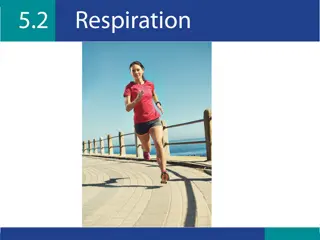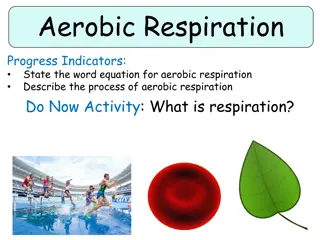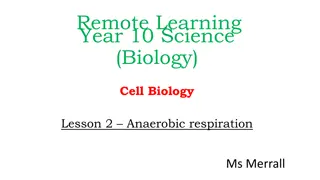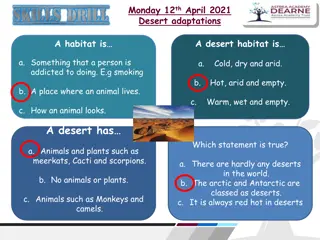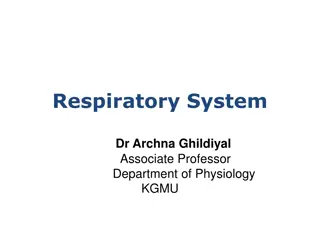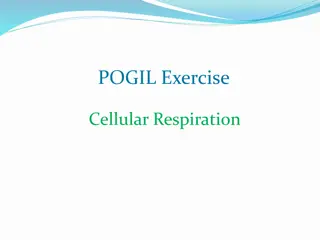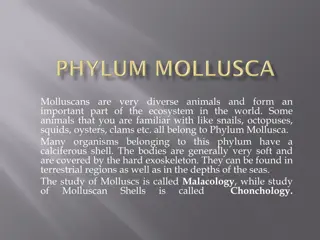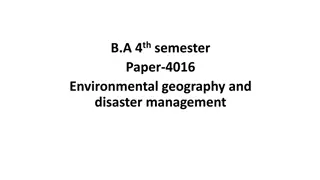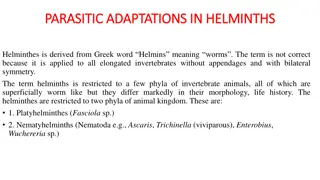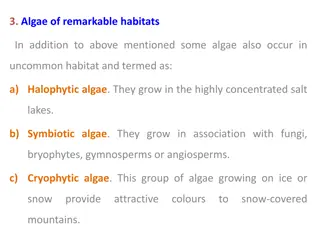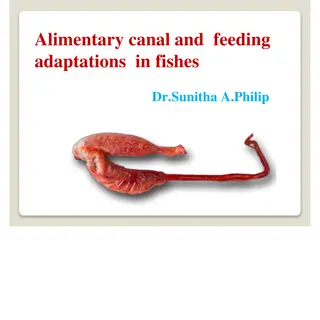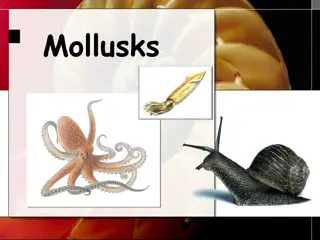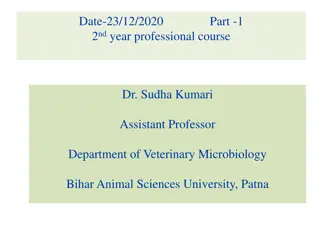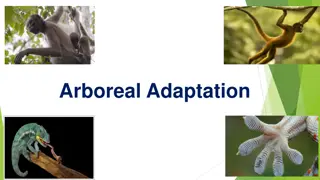Respiration in Mollusca: Adaptations to Different Habitats
Mollusca exhibit various modes of respiration depending on their habitat - aquatic, terrestrial, or amphibious. Different respiratory organs are modified accordingly, such as ctenidia or gills for aquatic species, pulmonary sac for aerial species, and mantle or integument for those lacking specific respiratory organs. The number and arrangement of gills vary among Molluscan groups, reflecting their diverse respiratory adaptations.
Download Presentation

Please find below an Image/Link to download the presentation.
The content on the website is provided AS IS for your information and personal use only. It may not be sold, licensed, or shared on other websites without obtaining consent from the author. Download presentation by click this link. If you encounter any issues during the download, it is possible that the publisher has removed the file from their server.
E N D
Presentation Transcript
SEM II- ZOOACOR03T-UNIT-5 Respiration In Mollusca Dr.Barnali Manna Deptt of Zoology Sarojini Naidu College for Women Dr. Barnali Manna 1
Respiration In Mollusca Dr. Barnali Manna 2
Different habitat different mode of respiration Mollusca show different modes of living. These are 1.Aquatic 2. Terrestrial 3. Amphibious So the respiratory organs are modified accordingly.. Dr. Barnali Manna 3
Types of Respiratory organ according to habitat 1. Ctenidia or Gill (Aquatic mode) It is called Branchial or Ctenidial respiration 2.Pulmonary sac(Aerial mode) It is called Pulmonary Respiration 3.Mantle or integument(those who have no specific respiratory organ) It is called Cuteneous or Pallial respiration Dr. Barnali Manna 4
Classification of Mollusca(Acc to Barnes,1994) Dr. Barnali Manna 5
Number of gills Molluscan group Number of Gills Polyplacophora 6 to 80 pairs Monoplacophora 3-6 pairs Primitive gastropod 2 bipectinate or single bipectinate Mesogastropod or Neogastropod Bivalves Single monopectinate A pair of plate like gills Cephalopod 2-4 gills Monopectinate: gill filaments arranged in a single row or one side of the axis. Bipectinate: arranged in two rows Dr. Barnali Manna 6
Position of Gill or Ctenidia Dr. Barnali Manna 7
Ctenidial Respiration(special reference to Pila globosa) A ctenidium(pl. ctenidia) consists of a horizontal main stem or axis hangs from the anterior wall of the mantle cavity. A row of flattened,triangular gill filaments or lamellae are attached to each side of ctenidial axis. The ctenidium contains afferent and efferent blood vessels,muscles and nerves. Dr. Barnali Manna 8
Aquatic respiration Ctenidium receives venous blood from the body through afferent branchial vein and after becoming oxygenated in the filaments ,it is sent back to heart through an efferent branchial vein. All the lamellae are not of the same size,in the middle the lamellae are larger and decrease in size towards the two ends. Anterior & posterior faces of each lamella are provided with transverse ridges or pleats,containing branches of blood vessels. Dr. Barnali Manna 9
Structure of lamella Histologically each lamella is formed of a double layer of epithelium which encloses a narrow cavity. Each epithelial layer consists of a)non-ciliated columnar cells, b)ciliated columnar cells,c)glandular cells. At the base of the layers are connective tissue cells & oblique muscle fibres. Next to these lies the pallial epithelium. Dr. Barnali Manna 10
Aquatic Respiration of Pila In aquatic respiration, a current of water containing oxygen is drawn in by the left siphon into the mantle cavity. The water then flows over the gill by the help of ciliated epithelia. Exchange of gases take place between the water and the blood vessels of gill. The water is expelled from the mantle cavity through the right siphon. Two fleshy projections over the foot, called nuchal lobes form the respiratory siphon during aquatic respiration in Pila . Dr. Barnali Manna 12
Pulmonary Sac or Lung The pulmonary sac is a closed cavity hanging from the dorsal wall of the mantle in the pulmonary chamber or left chamber of mantle cavity . The sac has an opening called the pneumostome in the pulmonary chamber which is guarded by two valves. The dorsal wall of the pulmonary sac is highly vascular and helps directly in gaseous exchange. Histologically, the sac is composed of outer epithelial layer, middle muscular and vascular connective tissue layers and inner endothelial layer . Dr. Barnali Manna 14
Aerial Respiration Pila resorts to aerial respiration A)at regular intervals during favourable conditions B)when the surrounding water becomes dirty and deficient in oxygen C)during aestivation During aerial respiration,the pila folds the margin of left nuchal lobe to form tube or siphon or trumpet funnel. Dr. Barnali Manna 15
Aerial respiration contd. The pulmonary chamber is cut off from the branchial chamber by tightly pressing the epitaenia against the roof of mantle. The pnumostome becomes circular and apposed to the base of siphon. The expansion and contraction of pulmonary sac bring inspiration and expiration. Exchange of gases takes place through the thin wall of the pulmonary sac. Dr. Barnali Manna 16





